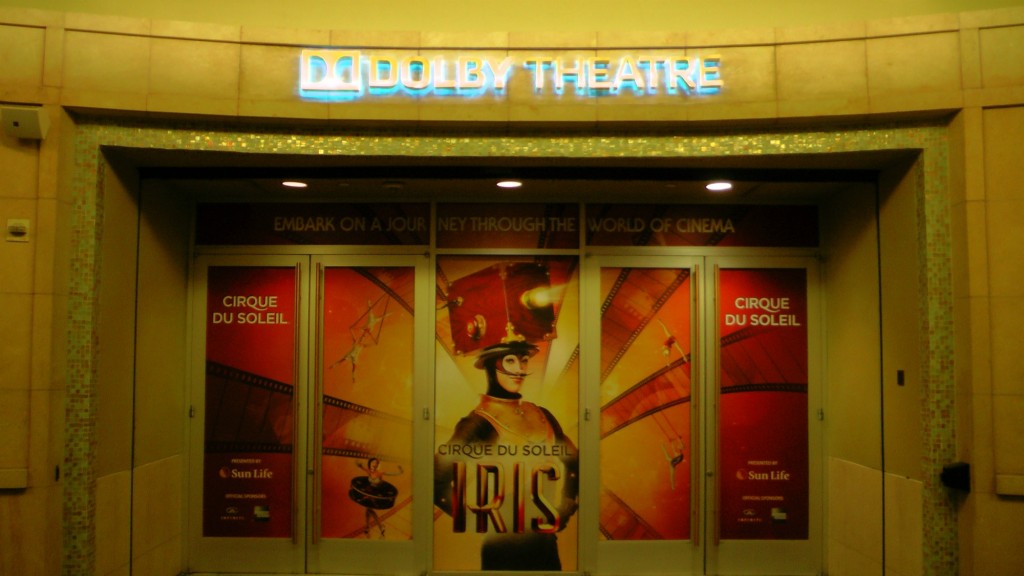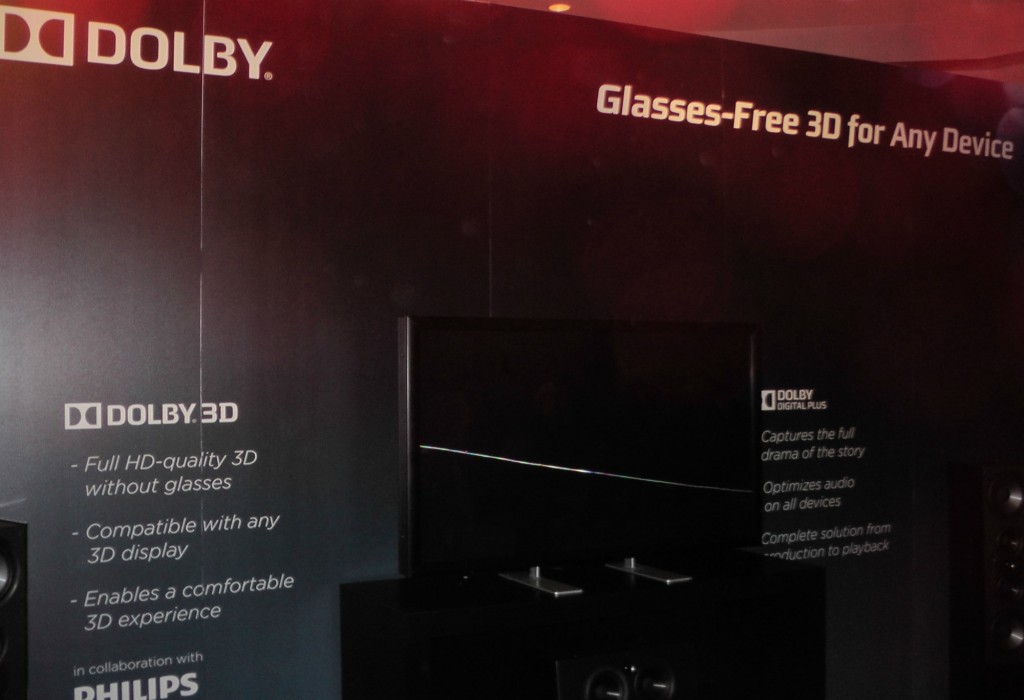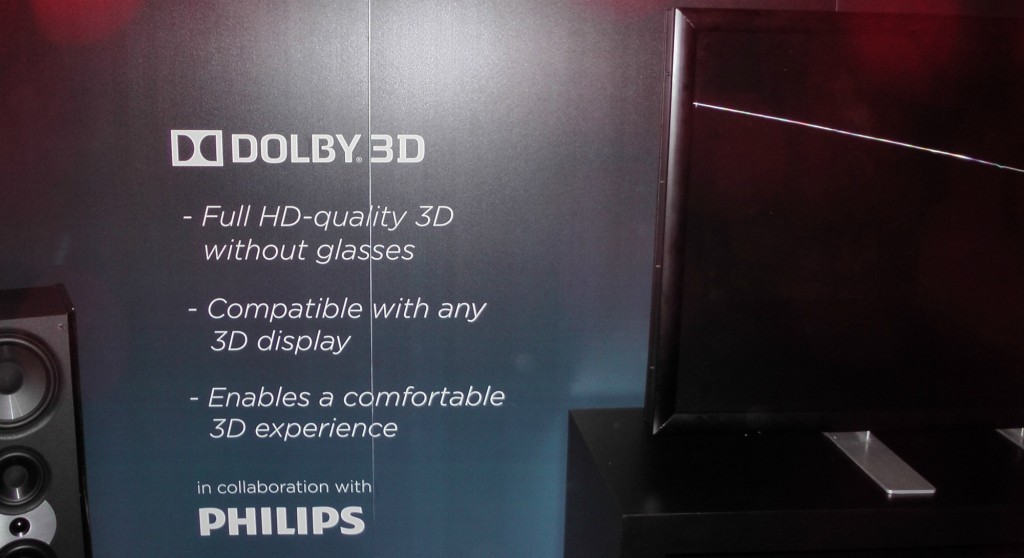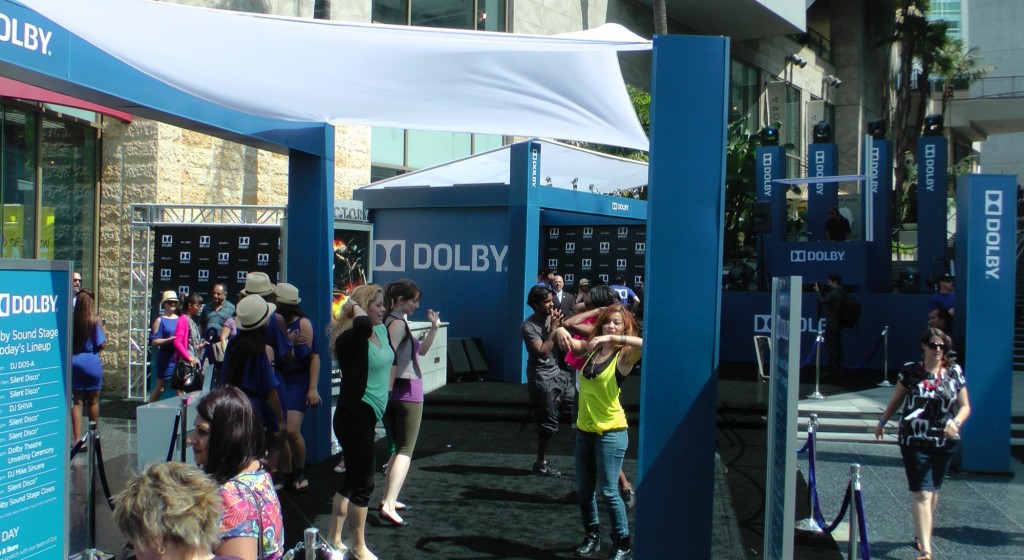The world-famous Kodak Theater officially became the Dolby Theatre Monday as the new Dolby signs on the front of the building on Hollywood Boulevard were revealed in an Academy Award-style red carpet ceremony.

 Inside the building earlier in the day, top Dolby executives provided a few journalists with the first sneak peek of the dramatic new Dolby Atmos audio set-up and 3D conversion of the multi-tiered 3,400-seat, 180,000 square-foot theater.
Inside the building earlier in the day, top Dolby executives provided a few journalists with the first sneak peek of the dramatic new Dolby Atmos audio set-up and 3D conversion of the multi-tiered 3,400-seat, 180,000 square-foot theater.
Dolby Atmos offers filmmakers the chance to set sounds at nearly any space in a theater without being limited to specifically-placed speakers producing audio from six designated channels. With Atmos, through a system that features many speakers along all four walls of a theater (including behind the screen) and, most notably, speakers on the ceiling, sounds can now be produced as 128 different “objects” almost anywhere in the room.
 Harkening back to the 1970s THX slogan that followed an in-theater promo, “The audience is now listening,” the slogan on a new pre-feature promo for the Atmos is, “Hear the whole picture.”
Harkening back to the 1970s THX slogan that followed an in-theater promo, “The audience is now listening,” the slogan on a new pre-feature promo for the Atmos is, “Hear the whole picture.”
“At Dolby, the sound comes first and the picture comes later,” said Ramzi Haidamus, Executive VP Sales and Marketing.
 The reconfigured Dolby Theatre, which will be used for one-time premieres of films such as Monday’s Disney-Pixar film “Brave,” as well as demos and screenings for industry artists, features 164 speakers, including 14 subwoofers, and 22 speakers mounted on two overhead 50-foot trussels. Those trussels will be removed for the weekly live Cirque du Soleil show “Iris,” featuring aerial trapeze artists.
The reconfigured Dolby Theatre, which will be used for one-time premieres of films such as Monday’s Disney-Pixar film “Brave,” as well as demos and screenings for industry artists, features 164 speakers, including 14 subwoofers, and 22 speakers mounted on two overhead 50-foot trussels. Those trussels will be removed for the weekly live Cirque du Soleil show “Iris,” featuring aerial trapeze artists.
Dolby expects to have 15-22 theaters in the U.S. configured similarly by the end of June, and will do the same in selected theaters in cities worldwide by the end of 2012. The official commercial launch of Atmos for purchase by theater owners will be in 12 months, Haidamus said.
 Even though the “pictures” come second, Dolby is very focused on those pictures, especially 3D images, for which the company has developed its own proprietary system for theaters as well as TVs and other applications.
Even though the “pictures” come second, Dolby is very focused on those pictures, especially 3D images, for which the company has developed its own proprietary system for theaters as well as TVs and other applications.
“It’s all about how we’re perceived,” said Dolby President and CEO Kevin Yeaman, noting that the company offers its services for theaters, TVs, and Internet-based cloud pograms.
Ramzi said Dolby technology is in 60% of TVs worldwide and in every Blu-ray player, as well as Windows 7 and Apple operating systems.
 As for 3D, Haidamus said Dolby has been involved with 3D technology since Disney began the modern wave with the release of “Chicken Little” in 2005. The company introduced a prototype glasses-less technology at the NAB show earlier this year in partnership with Philips Electronics, which works on any TV, no matter how big, and looks more impressive than previous prototypes but still less clear than standard 3D with glasses. No schedule has been set for a consumer rollout.
As for 3D, Haidamus said Dolby has been involved with 3D technology since Disney began the modern wave with the release of “Chicken Little” in 2005. The company introduced a prototype glasses-less technology at the NAB show earlier this year in partnership with Philips Electronics, which works on any TV, no matter how big, and looks more impressive than previous prototypes but still less clear than standard 3D with glasses. No schedule has been set for a consumer rollout.
 The Dolby Theatre features two 4K Christie projectors that employ a three-color system onto a 60’ x 32’ Harkness screen. A demo of a scene from the animated “Fly Me To The Moon” showcased moments in which objects in the film appeared to float to within arm’s length of the seated audience, emulating the more immersive 3D in IMAX movies and theme park attractions that most audiences expect when they pay a premium for the 3D version of a movie in theaters.
The Dolby Theatre features two 4K Christie projectors that employ a three-color system onto a 60’ x 32’ Harkness screen. A demo of a scene from the animated “Fly Me To The Moon” showcased moments in which objects in the film appeared to float to within arm’s length of the seated audience, emulating the more immersive 3D in IMAX movies and theme park attractions that most audiences expect when they pay a premium for the 3D version of a movie in theaters.
— By Scott Hettrick
